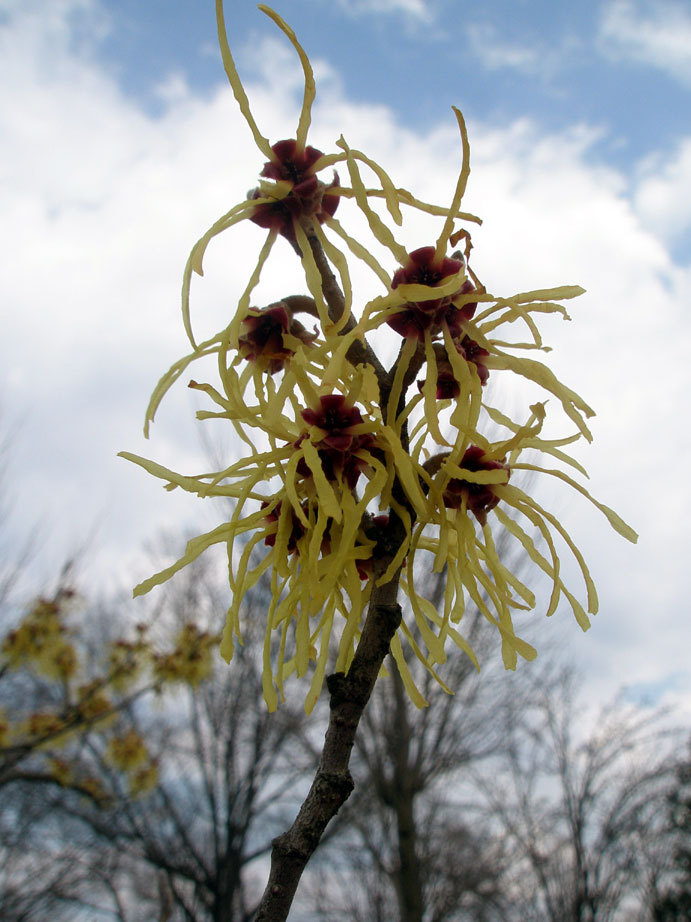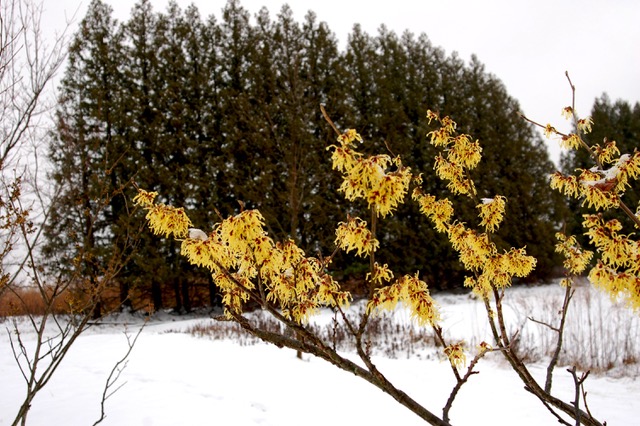Hamamelis virginiana

Witch-hazels or witch hazels (Hamamelis) are a genus of flowering plants in the family Hamamelidaceae, with three species in North America (H. ovalis, H. virginiana, and H. vernalis, and one each in Japan (H. japonica) and China (H. mollis). The witchhazels in the arboretum are H. virginiana. Bill Flemer indicated in a talk that the witch hazel in the arboretum was likely there for use as grafting root stock for other witch hazel cultivars.

There are numerous specimens in a row mid-arboretum that begin to bloom around Thanksgiving. This is Anne Zeman’s lovely image of witch hazel blooms in the snow.
Witch hazel twigs as divining rods for finding water, as pliable forked sticks such as can be found on this shrub are favored by dousers. The name ‘witch’ in witch-hazel comes from Middle English wiche, meaning “pliant” or “bendable,” and is not related to the word denoting a practitioner of magic. Witch hazel contains chemicals called tannins that can help reduce swelling, repair broken skin, and fight bacteria when applied directly to the skin. Witch hazel extract is an oily liquid that is distilled from the dried leaves, bark, and dormant twigs of the witch hazel. The extract is used in cosmetics and medicines due to its astringent properties, and is an active ingredient in Preparation H, a treatment for hemorrhoids. It is added to products used for the treatment of itching, pain and inflammation, varicose veins, bruises, insect bites, minor burns, acne, sensitive scalp, and other skin irritations. Witch hazel is also included in some medications to give those products the ability to slow down or stop bleeding.
